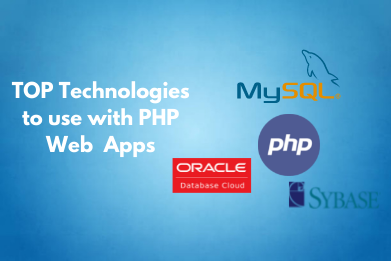
Here we have endeavored to present the databases as decreasing order of use cases with PHP. Thus the most prominent databases feature on the top while the less popular ones are listed further down.
MySQL
Certainly, the most popular database out there for PHP applications is MySQL. It’s a prominent open-source database all around the world besides there is the enterprise version of the database also available and it’s the paid one. A lot of popular applications such as SugarCRM, Magento, WordPress, and Drupal are using MySQL while it has its customers in Wikipedia, Facebook, and Google. With MySQL workbench you get a web-based user interface useful in managing the database.
PostGreSQL
Launched in 1995, PostGreSQL emphasizes compliance and standards. Comparatively to MySQL, PostGreSQL is feature rich while the database at present is under its release 9.3 compared to release 5.6 of MySQL. With advanced optimization and compression attribute, PostGrey is in the league of Oracle. The most prominent applications that use PostGreSQL are OpenBravo and PostERP among others. Meanwhile, as compared to MySQL, PostGreSQL is a fraction slower.
In case you mostly use Windows and have the related infrastructure already, then it’d be advised to use MS-SQL. However, web developments that use .NET and.ASP technology are going to cost more. This is the reason some customers use PHP getting it connected to MS-SQL. At the same time also keep in mind that it works just for PHP version 5+ only.
SYBASE
SYBASE was founded in Berkley in 1984 and it’s now in the team of SAP AG. Mostly used by enterprise database management, this solution has proved to be useful in performing under extreme load and suits best when an organization requires a big database. It connects with PHP using the sasql_connect() command similar to MySQL.
IBM-DB2
Established in 1983, IBM-DB2 was highly used in combination with mainframe systems. As of now, this database is used in a number of large scale ERP and e-Commerce implementations. In order to connect it with PHP, you require PECL extension.
Oracle Database
Well-established databases of the present times, Oracle database is quite prominent for Windows and Linux based servers. You can’t easily come across enterprises not using this database. In order to connect with PHP applications, you require an OCI8 extension. When you have the oci_connect function it can be used to connect to the database whereas Function oci_close () is useful in disconnecting the connection.
Other supported databases
Here we present the other databases that you can connect with PHP. Some are open source while others are proprietary. Gather more information about them on the homepage. Find below:
PHP programming ideas
The best attribute of the adept PHP developers is that they treat the database as an external entity ensuring effective working for their application. Here are the best practices to follow:
Conclusion:
So now as you very well know the number of database options offered by PHP, it’s time to make an informed decision regarding which database you would like to use in your case. We hope this write-up proves to be of great help for you enabling you to attain performance-optimized deliverables for your client.
Ut enim ad minim veniam, quis Neque porro quisquam est, qui dolorem ipsum quia dolor sit amet, consectetur, adipisci velit, sed quia non numquam eius modi tempora incidunt ut labore et nostrud exercitation ullamco laboris commodo consequat.
Helpful Comment ReportUt enim ad minim veniam, quis nostrud exercitation ullamco laboris commodo Sed ut perspiciatis unde omnis iste natus error sit voluptatem accusantium laboriosam, nisi ut aliquid ex ea commodi consequatur consequat.
Comment